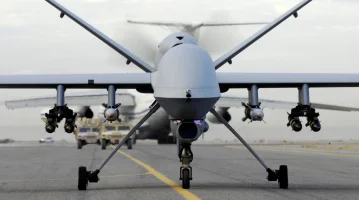- Views: 4K
- Replies: 31

India is significantly bolstering its air-to-surface strike capabilities with the development of a new long-range cruise missile, likely to be designated 'RudraM IV'. This advanced weapon, with a projected range exceeding 1000 kilometers, is being designed specifically for integration with the Indian Air Force's (IAF) Su-30MKI fighter aircraft.
The Defence Acquisition Council (DAC) greenlit the Acceptance of Necessity (AoN) for this indigenous Long-Range Stand-Off Weapon (LRSOW) back in March 2023, marking a crucial step towards self-reliance in advanced weapon systems.
While initially envisioned as a standalone missile, recent reports indicate that the LRSOW will join the existing RudraM family of air-to-surface missiles developed by the Defence Research and Development Organisation (DRDO).
The RudraM series, which includes the RudraM-I, RudraM-II & IIA, and the upcoming RudraM-III, are anti-radiation missiles designed to neutralize enemy radar and air defense systems.
The RudraM-III, with its 550-kilometer range, already provides the IAF with considerable reach. However, the RudraM-IV promises to significantly extend this capability, allowing the Su-30MKI to engage high-value targets deep within enemy territory.
This development underscores India's growing expertise in missile technology. By incorporating the LRSOW into the RudraM family, DRDO can streamline the development process, capitalizing on existing infrastructure and expertise. This approach not only accelerates the missile's induction but also ensures cost-effectiveness.
The RudraM-IV is expected to be a subsonic cruise missile, offering increased survivability and precision strike capabilities. With its extended range, the missile will allow the IAF to engage critical enemy infrastructure, command centers, and other strategic targets from a safe distance, minimizing the risk to its own aircraft.
This development comes at a time when India is actively modernizing its armed forces and focusing on indigenous defence production. The RudraM-IV represents a significant leap forward in this endeavor, demonstrating India's commitment to developing cutting-edge military technology and reducing its reliance on foreign suppliers.




